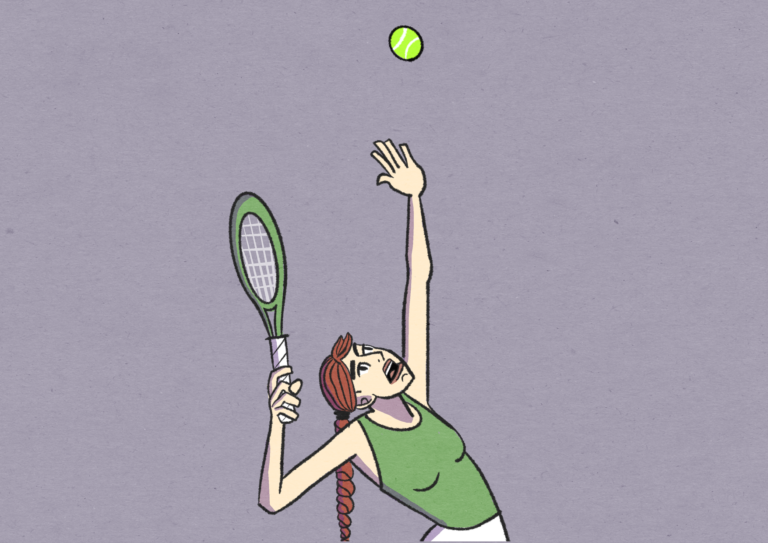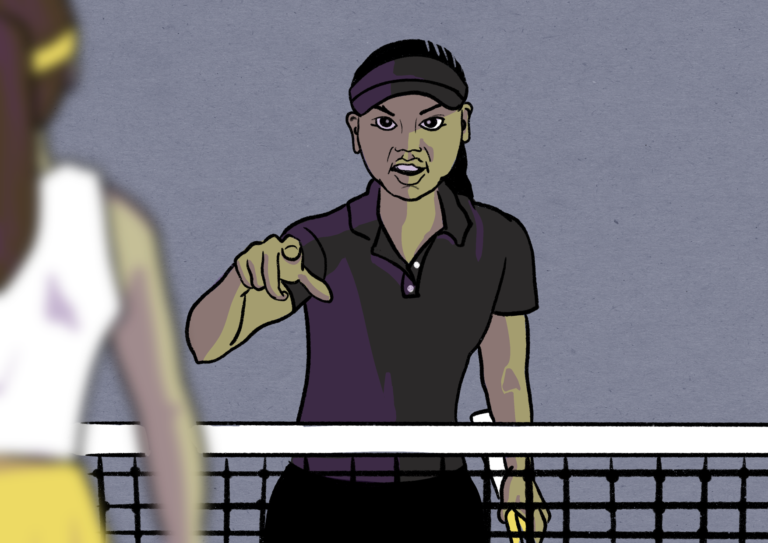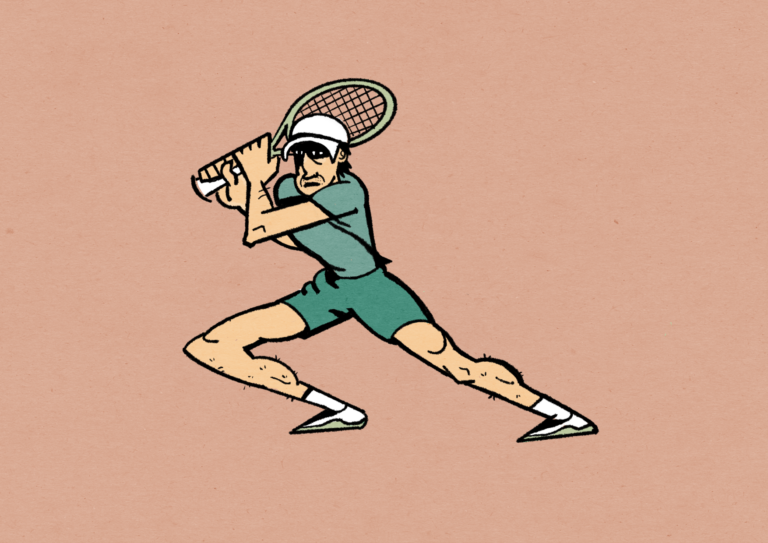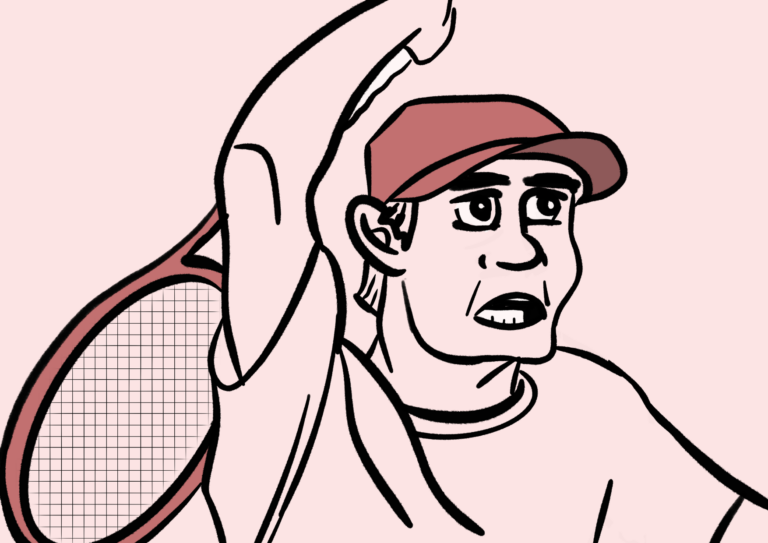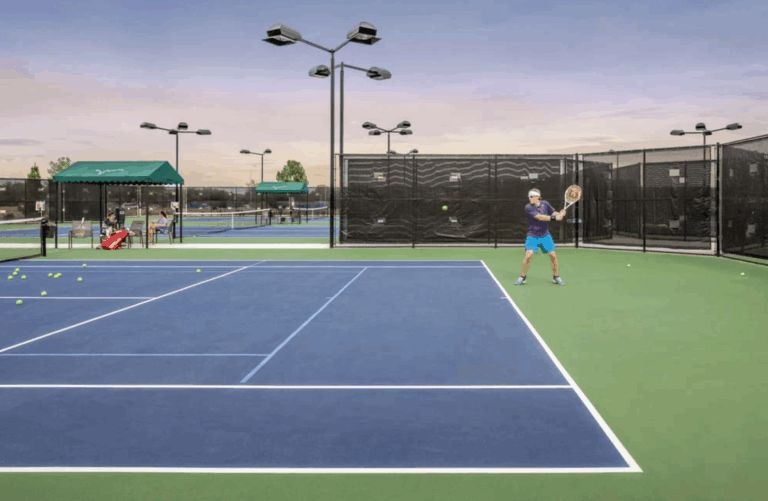Unforced Errors in Tennis: What They Are and How to Avoid Them
As you start playing more tennis and improving your game, it can be frustrating to feel like you are making avoidable mistakes. Everyone has had a day where they feel like they played terribly or their game was not what they would like it to be, but sometimes, it is difficult to pinpoint what it is that is not working with their game. Is it laziness? Tiredness? Lack of skill? Trying to identify errors and figuring out why you are not succeeding can feel like a daunting task, but, as you start learning about unforced errors and how to correct them, you will be able to play for longer, more efficiently, and confidently. By identifying your unforced errors and learning ways to improve them, you will find more joy and passion in the game.
What are Unforced Errors?
Unforced errors are errors on shots that were not forced by the opponent. This is a rather technical term, but unforced errors can consist of many different types of mistakes in tennis. If a shot is considered playable, or not a winner, and it’s missed, then it is an unforced error. When is a shot considered playable? With a certain degree of judgment, it’s playable when it’s close enough to be hit back over the net.
The main thing with these kinds of errors is that no one else is responsible. Unforced errors account for most points lost in beginner-intermediate level tennis. Tennis is a game of mistakes, because the point is contingent on keeping the ball in play. Do not be alarmed. Everyone makes unforced errors and gets into bad habits on the court. By identifying and rectifying these patterns, both mental and physical, you can learn ways to cut out unforced errors.
Forced vs Unforced Errors
If you watch tennis on television, you will see that the statistics typically include unforced and forced errors. From a statistical level, recorders are able to assess what is forced and unforced. To see an unforced error means that both players were equally in control of the situation. Neither player had a significant advantage, so the player who committed the error did so without any opponent pressure. This is different from a point in which the player who commits the errors in being dragged all over the court and eventually, their opponent hits a clean winner that is not reachable. There is a certain degree of judgment, certainly, but most of the time, these errors are detectable under that framework. Is someone clearly putting pressure on their opponent and forcing them to miss? Forced. If not, if the point is otherwise equal, or relatively so, this is an unforced error.
Causes of Unforced Errors
Unforced errors are not completely preventable, but by trying to understand the causes, you can learn ways to play more consistently. If you can limit unforced errors you will stay in the point for longer and ultimately win more matches. It’s important to know some of the major causes of unforced errors and see where you stand.

Mental Toughness
The first major cause of unforced errors in tennis is mental fatigue. Watching tennis, you might see a lot of players who look frustrated or mentally lacking. At that level, everyone has the skills and the ability to play at a high level, but a big determining factor is mental toughness. How can you identify if this is an issue for you? Do you feel a lot of pressure when you play? Are you often worried about hitting a bad shot? Do you find yourself hoping that a point will be over?
All of these questions affect someone who is lacking mental toughness. Another part of mental toughness is staying in the moment. If you’re playing tennis casually, you might find yourself thinking about other things while you play. Do you have a lot of work to do later? Grocery shopping? Or other tasks that are on your mind? This can affect the way you play most definitely and prevent you from making playable shots. Consider this when you’re playing.
Another way to tell if your unforced errors are part of mental toughness is to assess your confidence level. How do you feel when you play? Are you confident in your game and proud of your shots? If you enter practice, training, or a match with a less than positive attitude, you’re setting yourself up for errors centered on lack of mental toughness. You have to feel strong in how you play and how you can play to do well.
Fitness
Tennis is so fun that sometimes it’s easy to forget that it’s a big workout. Tennis is tiring, for players at all levels. You are sprinting the whole time and involving your entire body in a workout. A lack of fitness may creep in in a few different ways. After a couple of shots you may not be able to reach balls hit cross court. In which case you will be lunging at shots off balance that would otherwise be in your wheelhouse. A lack of fitness can also manifest in poor footwork. Not setting your feet properly or getting low can lead to errant shots. So between lack of strength, mobility, and stamina, fitness issues could be a huge reason why you are hitting a lot of unforced errors.
Lack of Consistency
A third cause of unforced errors is lack of consistency. For many players, they are able to hit one or two good shots while in their perfect positioning, but as soon as they move out of their comfort zone a tiny bit, hitting a good shot becomes tough. There are questions you can ask yourself to see if this is your issue. Do your points end really quickly? How many shots are your rallies usually? Do you feel as though your shot is either really good or absolutely terrible? Whether it might be great and where you want it to go or fly into the net? If you find yourself thinking about these questions, your issue might be lack of consistency.
Oftentimes, this cause is difficult to pinpoint because it can be a combination of lack of fitness and mentality. Many players who lack fitness are not able to be consistent because they can’t get to the ball in time and don’t have the fitness to reproduce the stroke they want many times. For instance, if your arm is tired and you miss a ball for the second shot of the point, you might attribute this to lack of consistency, but this is a fitness issue. Consistency, on the other hand, revolves around missing because you have not built the technical endurance necessary to complete a match. Lack of consistency is a cause of unforced errors in itself that can be tied to many things, including lack of mental toughness.
How to Fix Unforced Errors
Track Your Mistakes
Take mental note of where you’re missing from. Is it often groundstrokes? Is it more on the forehand or your backhand side? Or do you really struggle as soon as you have to move forward? Have you not practiced your returns enough? Take note of all of these things once you’ve finished a match or practice. You can also ask a coach or friend what they see. Sometimes it is hard to look at our own game objectively. Also, they may be able to pinpoint a technical error you didn’t even know existed. Every tennis player has things about their game that they don’t like or find difficult. So once you can identify what that is for you, you will have a more well-rounded game.
Watch your Opponent
Watching your opponent and paying more attention to their movements can serve to eliminate unforced errors. In order to use this strategy, focus on how your opponent is moving and where they place the ball. Sometimes, unforced errors stem from laziness and lack of concentration. This goes right back to staying focused in the moment-you have to try and find some way to keep yourself in the point. If you find yourself hitting careless shots and not really thinking about the strategy or the goal of the game, try watching your opponent. This will give you much more direction and precision because it reminds you that you’re playing against someone and setting objectives, rather than just hitting the ball mindlessly. Redirect your mind by watching your opponents’ moves. This tactic will also help significantly with forced errors, or errors due to the pressure of your opponent. By recalculating yourself and reorienting towards the other player, you’d better gauge where your opponent is hitting their shot.
Go For Less
All of us want to hit winners. When you see the pros hitting rocket winners down the line it can be inspiring. But they are pros for a reason. A big cause of unforced errors with competitive players is going for the perfect shot. Sometimes, we see an open court, but still, we want to hit the perfect shot into the corner of the court or the nicest drop shot. This desire to hit the best shot possible can sometimes hinder us. When players go for too much, usually they slam it out or miss it into the alley with shots that could have otherwise been solid. If you find yourself shooting for the lines or trying to hit a great winner, slow yourself down. Remember, it’s better to hit a pretty good shot that goes in rather than whiff a winner. If you find yourself going out slightly on the lines, try to aim for slightly less. Aim three feet inside the box rather than for the edge of the line. Shifting your mentality slightly in this way can make all the difference. Don’t lose the point yourself because you want to be perfect!
Focus on Spin
If a lot of your groundstrokes are going straight into the net or constantly long, you may want to utilize spin. Very flat shots are often more powerful but they are harder to control. When you hit groundstrokes with spin, the likelihood of it at least landing in go up. So you may be sacrificing your ability to hit winners but if you are plagued by unforced errors this May be the best tactic for you.
Some people think of a windshield wiper in order to simulate spin on groundstrokes. Others use the phrase “brush up” on the ball. Whatever works for you, do not forget to consciously swing through the ball as you’re learning how to improve your technique.
Drills for Consistency
If lack of consistency is creating your unforced errors, work on drills for consistency. This can be done alone or with a partner. There are various drills you can utilize that will build the muscle memory needed to execute every type of shot on the court. This is a problem that many beginner players face when trying to take their tennis to the next level. Tennis is about repetition so building good habits will help you to cut down on unforced errors.
If you have the chance to utilize a ball machine, you should do so. This will help you work on your endurance as well as your form. Another way to build consistency is to be cognizant of how many good shots you can make. For instance, if you’re rallying with your opponent and cannot hit more than 5 shots that are beyond the service line in a row, you will realize that your issue is consistency. In order to mitigate this problem, try to concentrate on getting as many deep, solid groundstrokes as you can. No matter which part of your game is giving you problems, through repeated practice and improved consistency you should be able to root out unwanted unforced errors.
Tennis Unforced Errors FAQs
Is a double fault an unforced error?
Yes. Missing two serves is entirely on the server. When you double fault, your opponent does not force you into those errors. If you or your opponent however, hit a serve past the opponent then that is deemed a winner, not an unforced error. This illustrates why getting your serve in and serving well is so important. It is in your control, no one else’s. If you can get your serve in, that is one error avoided.
Is hitting the net an unforced error?
It depends. Did your opponent hit a stunning shot out wide and the only thing you could do was barely hit it into the net? In this case, this is a forced error. Even though you hit it in the net, your opponent forced you into the error. If you received a returnable ball right down the middle and you hit it into the net, it’s unforced. Since there was no pressure forcing you to miss, this would be an error that would be considered your fault or avoidable–hence, an unforced error.



